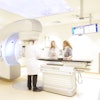Researchers from the University of North Carolina (UNC) at Chapel Hill have developed miniaturized x-ray tube technology that could be more accurate than existing x-ray tubes, according to research presented at the American Association of Physicists in Medicine (AAPM) annual meeting being held this week in Anaheim, CA.
The new x-ray tubes are able to irradiate cells with more control than was previously possible with conventional x-ray tubes, according to presenter Sha Chang, Ph.D. of the university's radiation oncology department. The technology is being developed to image human breast tissue, laboratory animals, and cancer patients receiving radiation therapy.
The multidisciplinary team from UNC developed cold x-ray tubes that are filled with carbon nanotubes packed like blades of grass. Electrons are instantly emitted from the sharp tips of the nanotubes when a voltage is applied.
The carbon nanotubes can be turned on and off instantaneously, making it feasible to synch up to equipment that monitors the breathing or heart rate of small animals. Existing x-ray technology has difficulty compensating for the blur caused by laboratory animals' breathing, the researchers said.
The nanotube devices may also improve human cancer imaging and treatment. Breast imaging could be performed within a few seconds by using many nanotube x-ray sources lined up in an array, according to Chang.
A clinical test of a first-generation nanotube-based imaging system for high-speed image-guided radiation therapy will be conducted this summer, Chang said. The system is being built at XinRay Systems of Research Triangle Park, NC, which is a joint venture between UNC's start-up company Xintek, also located in Research Triangle Park, and Siemens Healthcare of Malvern, PA.
Related Reading
Siemens, Xintek launch joint venture, September 18, 2007
Copyright © 2009 AuntMinnie.com



















